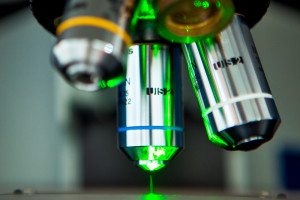Saliva is a mixture of systemic molecules, sensitive in presence and concentration to the onset and progression of disease states, representing an easy collectable and highly informative biofluid. For these reasons, saliva is studied as a valuable source of diagnostic markers for multiple disorders.
Raman spectroscopy was proposed as a fast and sensitive technique for multiple disorders diagnosis and monitoing, as it can provide the whole biochemical characterization of saliva without focussing on a single molecule. The application of Raman spectroscopy on saliva, has been already proposed for different infective, neurological and cancer diseases, with promising results in the diagnostic and monitoring fields.
For these reasons, at LABION we are working on the analysis of saliva with Raman spectroscopy as an investigative tool for the clinicians, helping the management of complex and chronic pathologies, including Amyotrophic Lateral Sclerosis, Parkinson’s disease, chronic obstructive pulmonary disease and COVID-19.
Labion is currently working on the Raman analysis of human saliva samples with different aims:
- 1. use of salivary Raman fingerprint of patient with Chronic Obstructive Pulmonary Disease (COPD) as qualitative and quantitative biomarker of the COPD conditions, variations and treatments from the pathology onset through the pharmacological and rehabilitative therapies
- 2. use of salivary Raman fingerprint for diagnosis and monitoring of Amyotrophic Lateral Sclerosis (ALS) and Parkinson’s Disease
- 3. use of salivary Raman fingerprint for identification of SARS-CoV-2 infection
In our studies we demonstrated the differences in saliva biochemical composition of the experimental groups, with modification in specific spectral regions allowing the discrimination of all considered patients from healthy and pathological controls. We also performed correlations between spectral features and the clinical and paraclinical tests used nowadays for the diseases identification and monitoring.
The proposed Raman approach has the potential to make more efficient the diagnostic procedure supporting clinicians and validating the methodology in different clinical settings.In this framework, the sensitivity of Raman spectroscopy makes it a promising candidate in molecular diagnostics and biomarker discovery.
Here the link of our publications in this field.
- Carlomagno C, Banfi PI, Gualerzi A, Picciolini S, Volpato E, Lax A, Colombo E, Ticozzi N, Verde F, Silvani V, Bedoni M. Human salivary Raman fingerprint as biomarker for the diagnosis of Amyotrophic Lateral Sclerosis. Scientific Reports, 2020, 10: 10175; doi:10.1038/s41598-020-67138-8.
- Carlomagno C, Bertazioli D, Gualerzi A, Picciolini S, Banfi PI, Lax A, Messina E, Navarro J, Bianchi L, Caronni A, Marenco F, Monteleone S, Arienti C, Bedoni M. COVID-19 salivary Raman fingerprint: innovative approach for the detection of current and past SARS-CoV-2 infections. Scientific Reports, 2021. doi: 10.1038/s41598-021-84565-3
- Carlomagno C, Gualerzi A, Picciolini S, Rodà F, Banfi PI, Lax A, Beodni M. Characterization of the COPD Salivary Fingerprint through Surface Enhanced Raman Spectroscopy. Diagnostics, 2021. ID: diagnostics-1140688. doi: 10.3390/diagnostics11030508
- Carlomagno C, Bertazioli D, Gualerzi A, Picciolini S, Andrico M, Rodà F, Meloni M, Banfi PI, Vrerde F, Ticozzi N, Silani V, Messina E, Bedoni M. Identification of the Raman salivary fingerprint of Parkinson’s disease through the spectroscopic-computational combinatory approach. Frontiers Neuroscience – Neurodegeneration, 2021, ID: 704963. doi: 10.3389/fnins.2021.704963
- Mangolini V, Gualerzi A, Picciolini S, Rodà F, Del Prete A, Forleo L, Rossetto RA, Bedoni M. Biochemical Characterization of Human Salivary Extracellular Vesicles as a Valuable Source of Biomarkers. Biology. 2023;12(2), 227. doi.org/10.3390/biology12020227
- Bertazioli D, Piazza M, Carlomagno C, Gualerzi A, Bedoni A, Messina E. An Integrated Computational Pipeline for Machine Learning-Driven Diagnosis based on Raman Spectra of saliva samples. Computers in Biology and Medicine, 2024, 171:108028. doi:10.1016/j.compbiomed.2024.108028
- Rodà, F.; Gualerzi, A.; Picciolini, S.; Forleo, L.; Mangolini, V.; Mancuso, R.; Agostini, S.; Rossetto, R.A.; Pierucci, P.; Banfi, P.I.; Bedoni M. Molecular Understanding of the Surface-Enhanced Raman Spectroscopy Salivary Fingerprint in People after Sars-COV-2 Infection and in Vaccinated Subjects. Chemosensors 2024, 12, 136. https://doi.org/10.3390/chemosensors12070136






